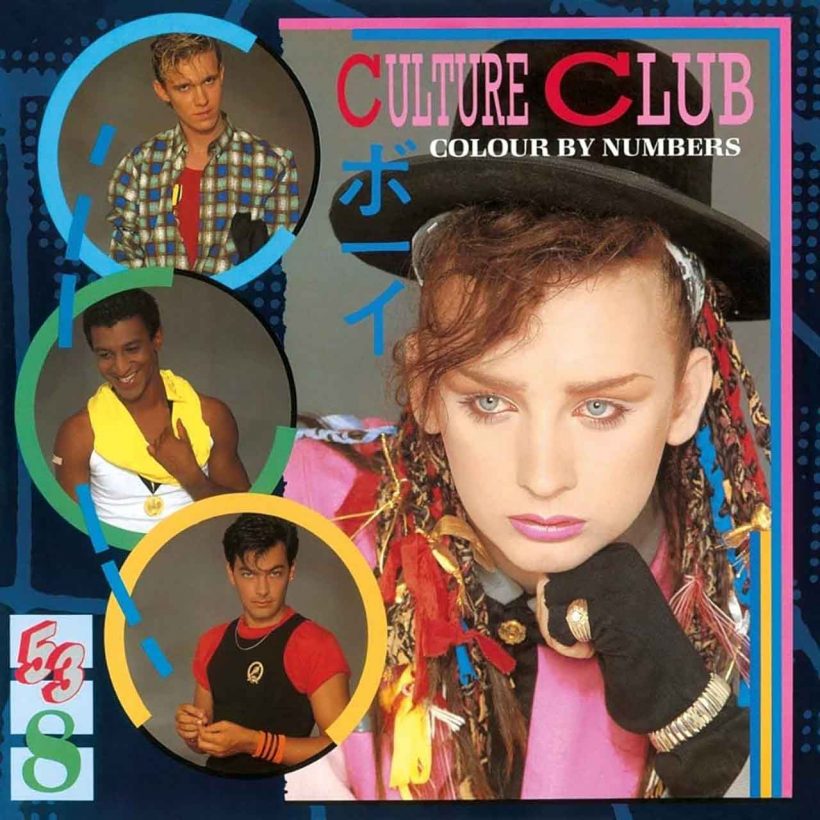‘Colour By Numbers’: How Culture Club Painted A Pop Masterpiece
The album is one of the most fully realized pop records of the 1980s.

Having topped the UK Top 40 and peaked at No. 2 on the Billboard Hot 100, Culture Club’s breakthrough hit “Do You Really Want To Hurt Me?” thrust the London quartet into the heart of the mainstream in the fall of 1982. However, while the single’s parent album Kissing To Be Clever also went Top 5, the band knew its next record, Colour By Numbers, needed to set a far higher standard if Culture Club were to remain at pop’s top table – especially at a time when rival English acts such as Spandau Ballet, Duran Duran, and Wham! were all becoming established household names.
Culture Club’s flamboyant frontman Boy George voiced this concern during a televised interview on British TV music and arts show The Tube early in 1983. “With so many great bands around, people can forget about you really quickly,” he said. “Especially when you’re a new band. So for us, it’s important to just keep pushing the records out so that we don’t lose our momentum.”
Listen to Culture Club’s Colour by Numbers now.
By the time George appeared on The Tube, Culture Club had notched up a second transatlantic Top 3 hit with the heartfelt, funk-flavored “Time (Clock Of The Heart),” allowing its creators some breathing space as they worked up the material for Colour By Numbers. As George also stressed on The Tube, the new songs would be notably more accomplished than anything Culture Club’s debut had to offer. “The next album is going to prove that we’re very musical,” he said. “It’s a lot more mature and sophisticated… We work very closely with [producer] Steve Levine, who is almost the fifth member of Culture Club.”
Levine – whose CV also includes production and engineering credits with Ziggy Marley, The Clash, and XTC – was quick to embrace the new technology coming on stream during the 1980s. An enthusiastic advocate of drum machines and the pioneering sampling keyboard, the Fairlight, his role was crucial to the development of Culture Club’s music.
“At first, [Steve] was a big influence because he knew all of the technical aspects, and we were learning,” bassist Mikey Craig said in an interview with Musician in October 1983. “Now, on the second album, he’s more like an ambassador. He directs things in the studio to make sure that people don’t clash and runs things smoothly. He’s quite good at that, actually. Apart from the good sounds he gets, he doesn’t really interfere very much with anything else.”
Certainly Colour By Numbers’ biggest spin-off single suggested Culture Club was now crafting stylish pop music with an across-the-board appeal. Ably assisted by a prevalent harmonica hook played by renowned session musician Judd Lander (Paul McCartney, Annie Lennox, ABC), “Karma Chameleon” was about as perfect as radio-friendly pop gets, even if Boy George’s deceptively dark lyric provided a stark contrast to the song’s relentlessly sunny musical backdrop.
“[Karma Chameleon] is about the terrible fear of alienation that people have, the fear of standing up for one thing,” George explained in Fred Bronson’s The Billboard Book Of #1 Hits. “It’s about trying to suck up to everybody. Basically, if you aren’t true, if you don’t act like you feel, then you get Karma justice, that’s nature’s way of paying you back.”
With its irresistibly sweet melodic touch leading the way, “Karma Chameleon” was simply unstoppable on release. Topping the US and UK charts, it took up seemingly permanent residence on daytime radio during the fall of 1983. Selling over a million copies at home, it became the UK’s biggest-selling single of the year, and won both BRIT and Ivor Novello Awards in 1984.
To Culture Club’s credit, most of Colour By Numbers’ contents matched up to the quality of its ubiquitous signature hit. It yielded a second Top 5 smash hit courtesy of the punchy, Motown-esque “Church Of The Poison Mind,” though it often scored its greatest artistic successes when the band relaxed the tempo a little. Indeed, Colour By Numbers’ ballads, “Black Money,” the grandstanding “Victims,” and the gospel-tinged “That’s The Way (I’m Only Trying To Help You)” – with the latter providing an excellent showcase for Boy George’s female vocal foil Helen Terry – all rank highly among Culture Club’s greatest moments.
Further endorsed by rave reviews (Rolling Stone suggested the record “secures lead singer Boy George’s place as a blue-eyed soul balladeer in the first rank”), Colour By Numbers dominated global charts on release in October 1983. The album was only kept off the top of the Billboard 200 by Michael Jackson’s Thriller, and it eventually went on to sell around 10 million copies in all. It was – and remains – one of the most fully realized pop records of the 1980s.












